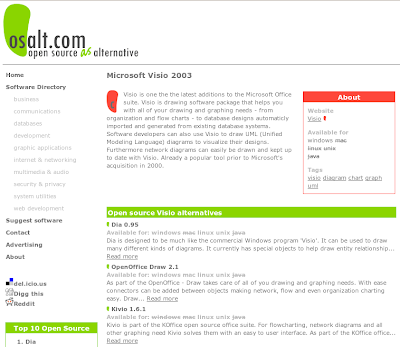Ubuntu (Canonical) as a business
ZDnet recently published a great interview with Mark Shuttleworth about the business model of his company, Canonical.
Mark also talks about Ubuntu's brilliant release strategy that I have blogged about.
I would be interested to hear what Mat Asay thinks about Ubuntu's business model, since he has been a huge advocate of Red Hat's business model.
Shuttleworth deliberately is taking a different approach from those rivals, though: The free, downloadable version of Ubuntu is the same as the supported, certified version.In this article, Mark explains that creating a user-friendly Linux desktop is how his company will get a foot in the door of customers who will buy support for Ubuntu servers. This is not a new idea, if you compare it to how Windows is bundled for "free" on millions of PCs. Look how successful this strategy was for Microsoft; I believe it will also help Canonical to be successful. Once you have your product in front of so many eyes, you have already developed a large mind-share from potential customers. Another benefit of having a large desktop market-share is that it will encourage developers to create applications for the operating system, similar to what happened with Windows.
Mark also talks about Ubuntu's brilliant release strategy that I have blogged about.
We have to continue to deliver the cutting-edge stuff, which is really best encapsulated with our regular six-month releases. That keeps the forward-looking early adopters happy and that's a very essential audience for us. Then on the other side, we have to learn how to offer the things that some of the slower adopters, the more pragmatic adopters, are looking for, which is predictability more than anything else. Predictability around the hardware that we support, the ISVs (independent software vendors) that we work with, the services that we provide them, and so on. One challenge for us is going to be keeping those two quite different groups happy at a time.There are some interesting statistics to be found in this article:
We can say that we estimate between 3 and 6 million users on the desktop.Based on personal experience, and the following quote, I bet the number is closer to 6 million.
We thought the large-scale organizations would tend to want the slower release cycle, but it isn't really working out that way. For example, there is a big debate right now in one of the big Spanish provinces as to whether their next release, which will go on to something like 400,000 desktops, should be based on Dapper or Edgy. That's very interesting, that the latest desktop features are attractive even in a very large deployment.Shuttleworth takes some time to illustrate the differences between Canonical's business model and other commercial Linux providers.
One thing that means is we're not competing with ourselves. For the organizations which have a free trial community edition and then an enterprise edition, they run into internal conflicts when half of the organization says, "Well, go ahead and use the free thing," and the other half of the organization says, "No, no, no, it's not secure, it's not tested, it's not certified." We think that we would rather avoid that conflict and again really give people what they are looking for.There are many other interesting comments in the article, so I recommend that you read it for yourself.
I would be interested to hear what Mat Asay thinks about Ubuntu's business model, since he has been a huge advocate of Red Hat's business model.



Comments
Post a Comment